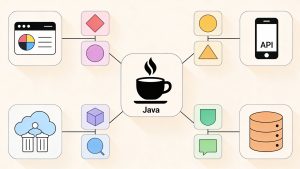In the landscape of modern application development, data serialization plays a pivotal role in how information is exchanged between systems. Two leading formats-JSON (JavaScript Object Notation) and Protocol Buffers (Proto)-often emerge as top choices for developers building web, mobile, and backend solutions. Understanding the strengths, limitations, and ideal use cases for each can significantly impact the performance, scalability, and maintainability of your projects.
JSON vs Proto: An Overview
JSON is a text-based, human-readable format known for its simplicity and universality. It can be easily read, edited, and debugged by developers across any platform, making it a go-to choice for many public APIs and configuration files.
Protocol Buffers, or Proto, is a binary serialization format developed by Google. While not as immediately accessible as JSON, Proto is engineered for speed and efficiency. Its binary nature means smaller payloads and faster processing, but it requires additional setup and is not human-readable without specialized tools.
Benchmarking Proto and JSON: Performance and Size
Performance benchmarks reveal clear differences between the two formats:
- Size: Protocol Buffers produce payloads that are approximately three times smaller than equivalent JSON data.
- Serialization Speed: For small datasets (such as 100 users), Proto serializes data over ten times faster than JSON.
- Deserialization: Both formats perform similarly when deserializing large datasets, though Proto maintains a slight edge.
- Scaling: As data volume increases (e.g., 1,000 users), Proto continues to offer smaller payloads, while JSON’s serialization speed gap narrows but does not close entirely.
These numbers highlight Proto’s advantages in environments where speed and bandwidth are critical.
When to Use JSON
Public APIs
JSON is ideal for public-facing APIs, such as those powering weather apps or e-commerce platforms. Its widespread adoption means any developer can quickly integrate and understand the data without extra tools or learning curves.
Rapid Prototyping and Side Projects
For hackathons, prototypes, or weekend projects, JSON’s human-readable format and lack of setup requirements make it the fastest way to get started and debug issues.
Human-Readable Configuration Files
When configuration files or settings need to be edited directly by developers, JSON excels. Its structure is easy to read and modify using any text editor, making it a favorite for config management.
When to Use Proto
High-Performance Mobile Applications
Proto is the preferred choice for mobile apps where network efficiency is paramount. Smaller payloads translate to faster data transfers, reduced latency, and a smoother user experience-critical for apps like ride-sharing or messaging platforms.
Microservices Communication
Within controlled backend environments, such as microservices architectures, Proto’s efficiency shines. Since the communication is machine-to-machine, human readability is less important than speed and payload size.
Realtime and Streaming Systems
For applications requiring real-time updates-such as gaming, financial trading, or live sports-Proto’s rapid serialization and deserialization capabilities make it the superior option.
IoT Devices
Internet of Things (IoT) devices often operate under strict bandwidth constraints. Proto’s compact binary format ensures minimal data usage, making it ideal for sensors and embedded systems.
Making the Right Choice: Use Both When Needed
Choosing between JSON and Proto is not an all-or-nothing decision. Many robust systems leverage both formats, selecting the best tool for each specific use case. The decision should be guided by the needs of your consumers-whether they are humans or machines-and your priorities around speed, size, and ease of integration.
Conclusion
Both JSON and Protocol Buffers offer unique advantages in data serialization. JSON’s readability and ease of use make it a staple for public APIs and rapid development, while Proto’s compactness and speed are essential for high-performance, real-time, and bandwidth-sensitive scenarios. By understanding the strengths of each, developers can architect systems that balance usability, efficiency, and scalability.
Read more such articles from our Newsletter here.



